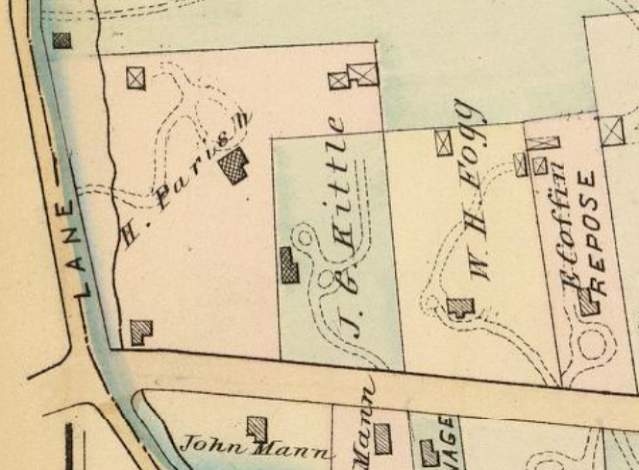Broadlawn: It became one with its Grey Gables neighbor
Broadlawn was Orient import/export merchant William Hayes Fogg's 3-1/2-acre country retreat at 120 North Broadway in Irvington.
Fogg (1817-1884) was born in what would become Maine -- it had yet to secede from Massachusetts when he burst into the world on a Berwick farm on Dec. 17, 1817. Maine would secede and become the 23rd state on March 15, 1820.
Fogg wasn’t long for Berwick nor his next home in Boston. Soon he would move to Manhattan for business and make Irvington his country seat, settling in Broadlawn on the east side of North Broadway a couple of blocks south of East Sunnyside Lane.
In 1847, the 30-year-old Fogg took advantage of the new Treaty of Nanking which opened China to trade with the West by founding Fogg Brothers Co., a Boston-based trading outfit, with his brother Hiram. The options opened further when Japan opened its market in 1853.
Fogg wasn’t long for Berwick nor his next home in Boston. Soon he would move to Manhattan for business and make Irvington his country seat, settling in Broadlawn on the east side of North Broadway a couple of blocks south of East Sunnyside Lane.
In 1847, the 30-year-old Fogg took advantage of the new Treaty of Nanking which opened China to trade with the West by founding Fogg Brothers Co., a Boston-based trading outfit, with his brother Hiram. The options opened further when Japan opened its market in 1853.
 |
William Hayes Fogg oil on canvas portrait. (Eastman Johnson, 1887. Harvard Art Museums) |
Fogg Brothers thrived trading tea and silk from the Orient for whale oil and other goods from the West and moved to a new headquarters in Manhattan by 1852. In 1855, Hiram Fogg died, leaving the 38-year-old William in charge of the firm he would soon rename the China and Japan Trading Company.
The money poured in. Fogg’s company opened offices in Yokohama and Osaka, Shanghai, San Francisco and London. Fogg left most of the running of the business to a nephew and he and his wife Elizabeth Perkins Fogg collected art from the Orient, enjoyed homes on Fifth Avenue and Irvington, and traveled the world.
When he died in 1884 he left an estate worth more than $1.5 million -- $43.2 million today. The estate was widely distributed after Elizabeth’s death in 1891, going mainly to philanthropic causes.
Among those donations were the family’s art collection and $200,000 to Harvard University to build the William Hayes Fogg Museum of Art on its Cambridge, Mass., campus to house that collection.
After Elizabeth’s death, Broadlawn was sold to Manhattan attorney Harry L. Toplitz and his wife, Lillie, whose family owned it through the first quarter of the 20th century. Both Harry and Lillie were first-generation Americans, born to German immigrant parents on both sides.
 |
The William Hayes Fogg Museum of Art at Harvard University. (Wikimedia Commons, public domain |
James Hall and Williaminia (Dewar) Hall, who owned the two-acre Grey Gables estate adjacent to Broadlawn's north side, purchased Broadlawn from the Toplitz heirs in October 1927 for an estimated $38,000 ($577,000 today). The sale came after court haggling among Toplitz heirs claiming shares of 1/28th to 1/4th of the estate. The local Irvington Gazette newspaper noted at the time that Hall's purchase made moot the 18 lots into which the estate had been divided for purposes of a future sale. The estate was on the market for years before Hall bought it and promptly remodeled the main house. Hall lived on the Broadlawn estate and his daughter Elza and son-in-law Robert Wilt lived in the Grey Gables mansion until 1941 when they moved to Connecticut.
In the 1930 U.S. Census, Hall, a Scotland-born private practice CPA (Williaminia was also born in Scotland), listed the value of his real estate holdings at $150,000 ($2.4 million today).
The combined Grey Gables/Broadlawn properties were later sold and since 1947 have been the site of Irvington Gardens, a co-op apartment community.
In the 1930 U.S. Census, Hall, a Scotland-born private practice CPA (Williaminia was also born in Scotland), listed the value of his real estate holdings at $150,000 ($2.4 million today).
The combined Grey Gables/Broadlawn properties were later sold and since 1947 have been the site of Irvington Gardens, a co-op apartment community.











Comments
Post a Comment
If you would like to weigh-in, feel free ...